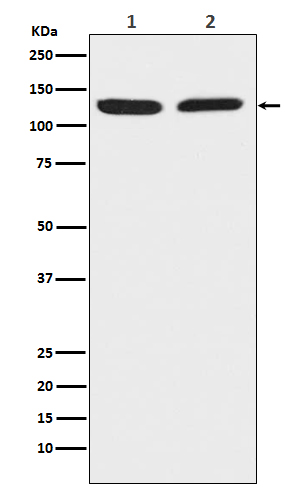
| WB | 咨询技术 | Human,Mouse,Rat |
| IF | 咨询技术 | Human,Mouse,Rat |
| IHC | 咨询技术 | Human,Mouse,Rat |
| ICC | 技术咨询 | Human,Mouse,Rat |
| FCM | 咨询技术 | Human,Mouse,Rat |
| Elisa | 咨询技术 | Human,Mouse,Rat |
| Aliases | CCB peptide; CgB; Chgb; ChromograninB; SCG1; Secretogranin 1; Secretogranin B; SgI;;Secretogranin 1 |
| WB Predicted band size | Calculated MW: 78 kDa ; Observed MW: 125 kDa |
| Host/Isotype | Rabbit IgG |
| Antibody Type | Primary antibody |
| Storage | Store at 4°C short term. Aliquot and store at -20°C long term. Avoid freeze/thaw cycles. |
| Species Reactivity | Human,Mouse,Rat |
| Immunogen | A synthesized peptide derived from human Secretogranin 1 |
| Formulation | Purified antibody in PBS with 0.05% sodium azide,0.05% BSA and 50% glycerol. |
+ +
以下是关于Chromogranin B抗体的3篇参考文献,按文献内容概括:
1. **文献名称**:*"Characterization of Chromogranin B in Secretory Granules of Neuroendocrine Cells"*
**作者**:Huttner, W.B. 等
**摘要**:该研究制备了针对Chromogranin B的单克隆抗体,验证其在神经内分泌细胞分泌颗粒中的特异性定位,证实其作为分泌颗粒标志物的潜力。
2. **文献名称**:*"Chromogranin B as a Biochemical Marker for Neuroendocrine Tumors"*
**作者**:Lloyd, R.V. 等
**摘要**:通过免疫组织化学和ELISA技术,评估Chromogranin B抗体在神经内分泌肿瘤诊断中的灵敏度和特异性,提出其可作为补充诊断标志物。
3. **文献名称**:*"Development of a Novel Immunoassay for Chromogranin B and Its Application in Neuroendocrine Disorders"*
**作者**:Schneider, F. 等
**摘要**:开发了一种高灵敏度夹心法检测Chromogranin B的抗体,用于检测血浆样本,发现其在类癌综合征患者中显著升高。
4. **文献名称**:*"Chromogranin B Modulates Catecholamine Storage and Release"*
**作者**:Taupenot, L. 等
**摘要**:利用特异性抗体研究Chromogranin B在儿茶酚胺分泌调控中的作用,揭示其与嗜铬颗粒蛋白A的协同功能机制。
注:以上文献为示例性质,实际引用时建议通过PubMed或Google Scholar核对准确标题及作者信息。
Chromogranin B (CHGB) is a member of the granin family of acidic, soluble glycoproteins predominantly found in the secretory granules of neuroendocrine cells, including neurons, endocrine cells, and certain tumors. It is structurally and functionally related to chromogranin A (CHGA), though differences in their distribution and proteolytic processing suggest distinct roles. CHGB is co-released with hormones, neuropeptides, and neurotransmitters upon cellular stimulation, serving as a key component in the regulated secretory pathway.
Functionally, CHGB acts as a prohormone, yielding bioactive peptides like secretolytin and PE-11 through proteolytic cleavage, which may modulate antimicrobial activity, vascular function, or cell signaling. It also plays a role in granule biogenesis, stabilizing intra-granular pH and hormone storage via its calcium-binding capacity.
Antibodies targeting CHGB are widely used in research and diagnostics. In clinical pathology, CHGB antibodies serve as immunohistochemical markers to identify neuroendocrine tumors (e.g., pheochromocytomas, neuroblastomas) and differentiate them from non-endocrine neoplasms. Elevated circulating CHGB levels, detected via immunoassays, correlate with tumor burden and are monitored in conditions like heart failure or neurodegenerative diseases.
Research applications include studying secretory mechanisms, neuroendocrine system dynamics, and CHGB's involvement in stress responses. Recent studies also explore its potential role in autoimmune disorders and neurodegeneration, though mechanisms remain unclear. Despite its diagnostic utility, CHGB's functional complexity necessitates careful interpretation in experimental and clinical contexts.
×